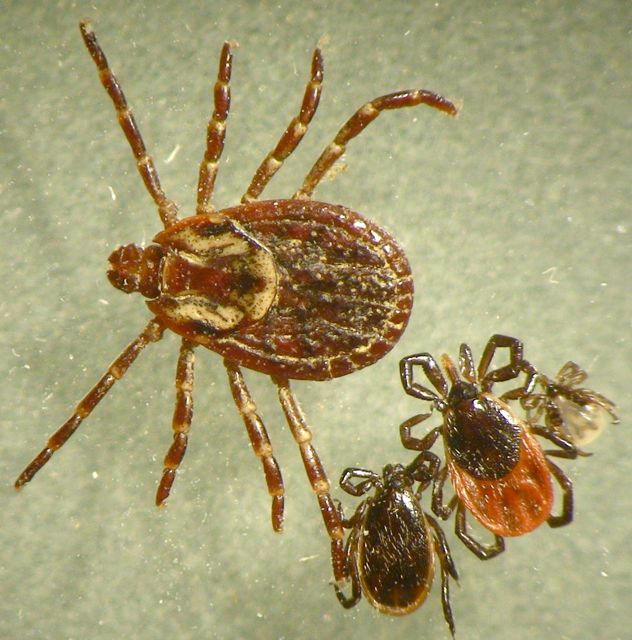ODNR urges taking precautions to minimize contact with ticks


ODNR urges taking precautions to minimize contact with ticks
COLUMBUS, Ohio — The Ohio Department of Natural Resources (ODNR) Division of Wildlife encourages Ohioans to be cautious while enjoying the outdoors this summer and take action to minimize contact with ticks. Ticks are found throughout Ohio and sometimes carry potentially dangerous diseases.
Many of Ohioans’ favorite outdoor activities can lead to increased exposure to ticks. Anglers, birders, hikers, and hunters should take precautions to prevent ticks from becoming attached to their skin. Treat clothing worn outdoors with permethrin-based repellents according to the label directions. To keep ticks on the outside of clothing, it may help to wear a long-sleeved shirt tucked into pants with pant legs that are tucked into socks or boots. It may also be helpful to wear light-colored clothing, which will make it easier to spot ticks.
Thoroughly check clothes and skin for any attached ticks after any outdoor excursion, and don’t forget to check pets and gear, too. Ticks found attached to you or pets should be removed as quickly as possible to reduce the risk of contracting tick-borne diseases. To remove a tick, use tweezers or gloved hands. Grasp the tick as close to the skin as possible and pull straight back with steady, even pressure.
There are three medically significant species of tick in Ohio: the American dog tick, the blacklegged tick, and the lone star tick. All three species have the potential to transmit diseases to humans and pets. Remain vigilant now and into the fall when the risk of contracting tick-borne disease is highest, but Lyme disease is possible year-round in Ohio.
The American dog tick is the most common tick in Ohio and is found in grassy areas. It is most active during the summer months and is the primary transmitter of Rocky Mountain Spotted Fever. The blacklegged tick is also known as the deer tick because it is frequently found on white-tailed deer. Blacklegged ticks have increased in Ohio since 2010, especially in forested areas. This species is active throughout the year, including winter, and can carry Lyme disease. Lone star ticks are mostly found in southern Ohio in shaded, grassy areas and are active during the warmer months. This species can also transmit several diseases.
More information on these and other tick species, including photos, are found on the Ohio Department of Health webpage. To learn more about tick-borne diseases and their symptoms, visit cdc.gov/ticks.
Ticks can transmit disease within 36 to 48 hours after the initial bite. It is important to regularly check for ticks and remove them as quickly as possible. Outdoor recreation increases the chance of encountering ticks. Urban and suburban development also increases the risk as people are close to mice, deer, and other hosts for ticks. Pets in an outdoor setting should have tick control.
It is important to note that, unlike humans and pets, wild animals such as deer are not affected by the blacklegged tick and suffer no ill effects from Lyme disease. Hunters should remember that hunting and dressing deer may bring them into close contact with infected ticks. Lyme disease cannot be transmitted by the consumption of venison.








